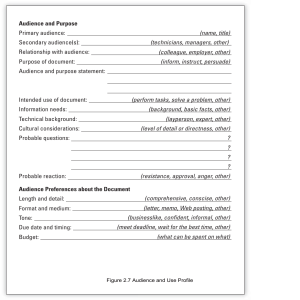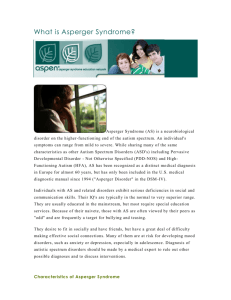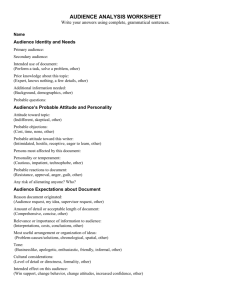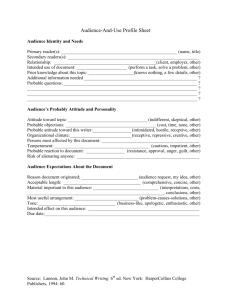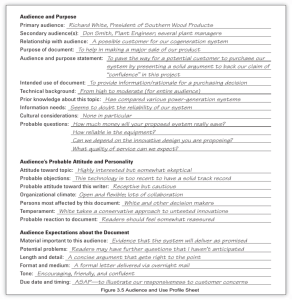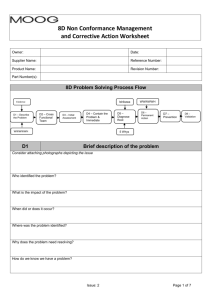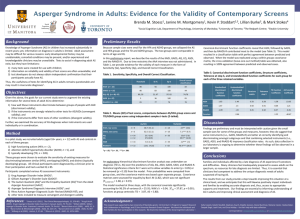Gilliam Asperger Disorder Scale (GADS) Assessment
advertisement
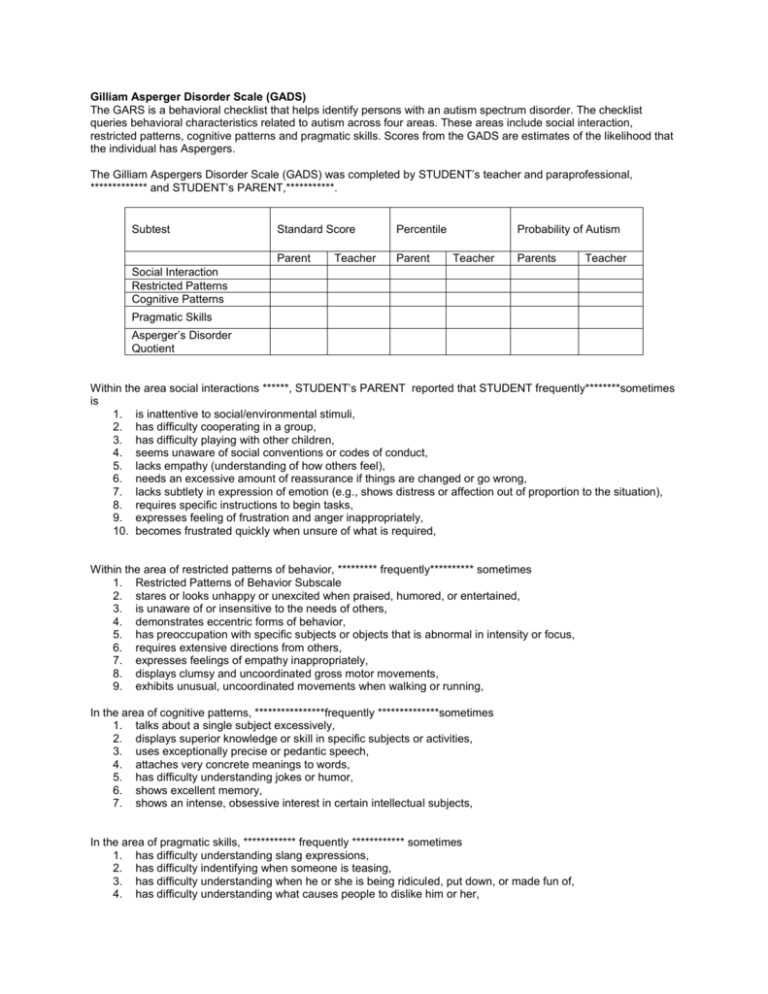
Gilliam Asperger Disorder Scale (GADS) The GARS is a behavioral checklist that helps identify persons with an autism spectrum disorder. The checklist queries behavioral characteristics related to autism across four areas. These areas include social interaction, restricted patterns, cognitive patterns and pragmatic skills. Scores from the GADS are estimates of the likelihood that the individual has Aspergers. The Gilliam Aspergers Disorder Scale (GADS) was completed by STUDENT’s teacher and paraprofessional, ************* and STUDENT’s PARENT,***********. Subtest Standard Score Percentile Parent Parent Teacher Probability of Autism Teacher Parents Teacher Social Interaction Restricted Patterns Cognitive Patterns Pragmatic Skills Asperger’s Disorder Quotient Within the area social interactions ******, STUDENT’s PARENT reported that STUDENT frequently********sometimes is 1. is inattentive to social/environmental stimuli, 2. has difficulty cooperating in a group, 3. has difficulty playing with other children, 4. seems unaware of social conventions or codes of conduct, 5. lacks empathy (understanding of how others feel), 6. needs an excessive amount of reassurance if things are changed or go wrong, 7. lacks subtlety in expression of emotion (e.g., shows distress or affection out of proportion to the situation), 8. requires specific instructions to begin tasks, 9. expresses feeling of frustration and anger inappropriately, 10. becomes frustrated quickly when unsure of what is required, Within the area of restricted patterns of behavior, ********* frequently********** sometimes 1. Restricted Patterns of Behavior Subscale 2. stares or looks unhappy or unexcited when praised, humored, or entertained, 3. is unaware of or insensitive to the needs of others, 4. demonstrates eccentric forms of behavior, 5. has preoccupation with specific subjects or objects that is abnormal in intensity or focus, 6. requires extensive directions from others, 7. expresses feelings of empathy inappropriately, 8. displays clumsy and uncoordinated gross motor movements, 9. exhibits unusual, uncoordinated movements when walking or running, In the area of cognitive patterns, ****************frequently **************sometimes 1. talks about a single subject excessively, 2. displays superior knowledge or skill in specific subjects or activities, 3. uses exceptionally precise or pedantic speech, 4. attaches very concrete meanings to words, 5. has difficulty understanding jokes or humor, 6. shows excellent memory, 7. shows an intense, obsessive interest in certain intellectual subjects, In the area of pragmatic skills, ************ frequently ************ sometimes 1. has difficulty understanding slang expressions, 2. has difficulty indentifying when someone is teasing, 3. has difficulty understanding when he or she is being ridiculed, put down, or made fun of, 4. has difficulty understanding what causes people to dislike him or her, 5. 6. 7. fails to predict probable consequences in social events, has difficulty making believe or pretending, when confused, doesn’t ask for clarification but switches to a familiar topic, ************ scored ************* in the high/probable, borderline, low/not probable range of being of the probability of Asperger’s Disorder. Within the area social interactions ********, STUDENT’s Teacher reported that ********frequently *********sometimes is 1. is inattentive to social/environmental stimuli, 2. has difficulty cooperating in a group, 3. has difficulty playing with other children, 4. seems unaware of social conventions or codes of conduct, 5. lacks empathy (understanding of how others feel), 6. needs an excessive amount of reassurance if things are changed or go wrong, 7. lacks subtlety in expression of emotion (e.g., shows distress or affection out of proportion to the situation), 8. requires specific instructions to begin tasks, 9. expresses feeling of frustration and anger inappropriately, 10. becomes frustrated quickly when unsure of what is required, Within the area of restricted patterns of behavior, ******** frequently*********** sometimes 1. Restricted Patterns of Behavior Subscale 2. stares or looks unhappy or unexcited when praised, humored, or entertained, 3. is unaware of or insensitive to the needs of others, 4. demonstrates eccentric forms of behavior, 5. has preoccupation with specific subjects or objects that is abnormal in intensity or focus, 6. requires extensive directions from others, 7. expresses feelings of empathy inappropriately, 8. displays clumsy and uncoordinated gross motor movements, 9. exhibits unusual, uncoordinated movements when walking or running, In the area of cognitive patterns, ****************frequently **************sometimes 1. talks about a single subject excessively, 2. displays superior knowledge or skill in specific subjects or activities, 3. uses exceptionally precise or pedantic speech, 4. attaches very concrete meanings to words, 5. has difficulty understanding jokes or humor, 6. shows excellent memory, 7. shows an intense, obsessive interest in certain intellectual subjects, In the area of pragmatic skills, ************ frequently ************ sometimes 1. has difficulty understanding slang expressions, 2. has difficulty indentifying when someone is teasing, 3. has difficulty understanding when he or she is being ridiculed, put down, or made fun of, 4. has difficulty understanding what causes people to dislike him or her, 5. fails to predict probable consequences in social events, 6. has difficulty making believe or pretending, 7. when confused, doesn’t ask for clarification but switches to a familiar topic, ************ scored ************* in the high/probable, borderline, low/not probable range of being of the probability of Asperger’s Disorder.
